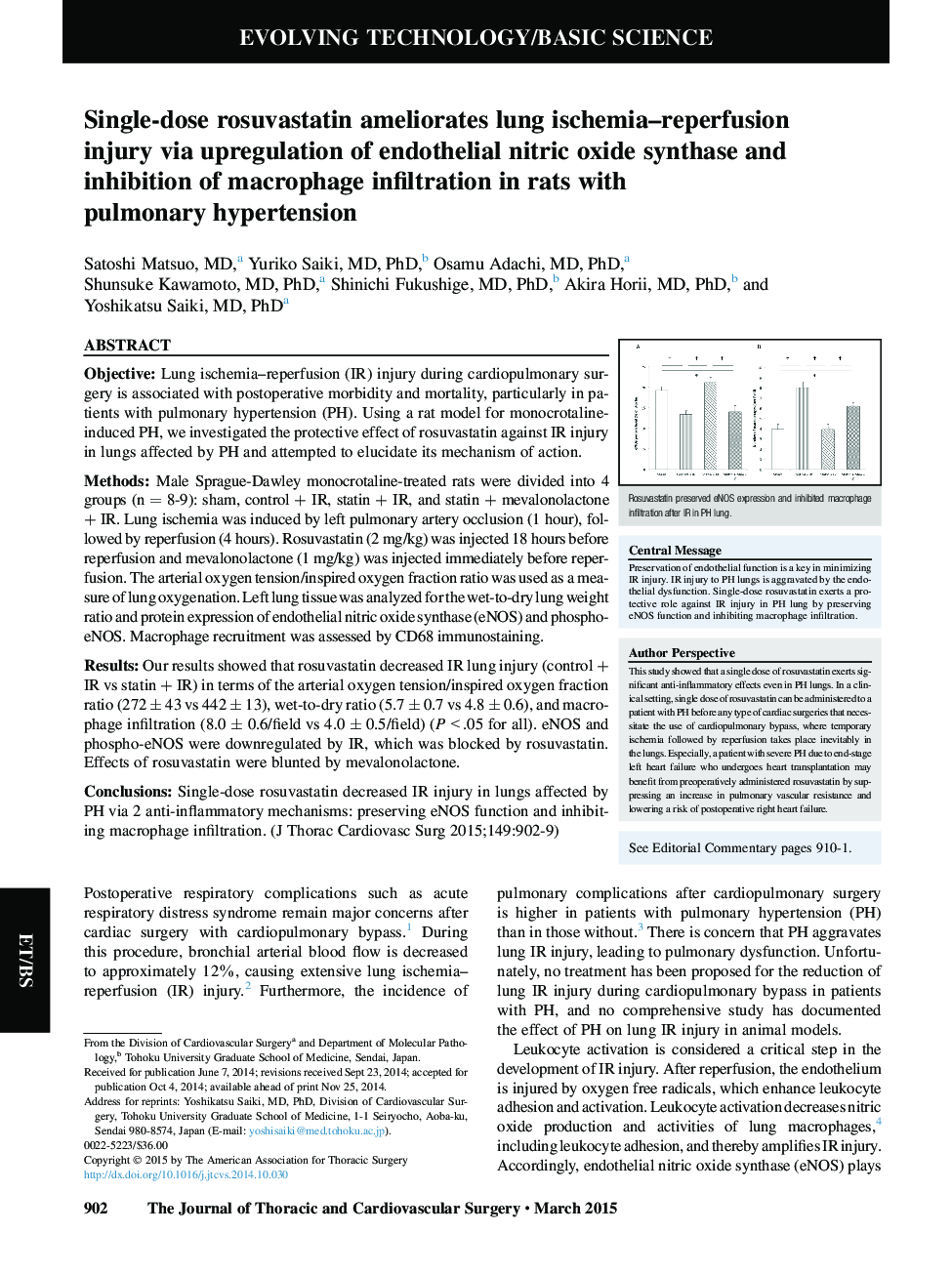| Article ID | Journal | Published Year | Pages | File Type |
|---|---|---|---|---|
| 5988963 | The Journal of Thoracic and Cardiovascular Surgery | 2015 | 8 Pages |
ObjectiveLung ischemia-reperfusion (IR) injury during cardiopulmonary surgery is associated with postoperative morbidity and mortality, particularly in patients with pulmonary hypertension (PH). Using a rat model for monocrotaline-induced PH, we investigated the protective effect of rosuvastatin against IR injury in lungs affected by PH and attempted to elucidate its mechanism of action.MethodsMale Sprague-Dawley monocrotaline-treated rats were divided into 4 groups (n = 8-9): sham, control + IR, statin + IR, and statin + mevalonolactone + IR. Lung ischemia was induced by left pulmonary artery occlusion (1 hour), followed by reperfusion (4 hours). Rosuvastatin (2 mg/kg) was injected 18 hours before reperfusion and mevalonolactone (1 mg/kg) was injected immediately before reperfusion. The arterial oxygen tension/inspired oxygen fraction ratio was used as a measure of lung oxygenation. Left lung tissue was analyzed for the wet-to-dry lung weight ratio and protein expression of endothelial nitric oxide synthase (eNOS) and phospho-eNOS. Macrophage recruitment was assessed by CD68 immunostaining.ResultsOur results showed that rosuvastatin decreased IR lung injury (control + IR vs statin + IR) in terms of the arterial oxygen tension/inspired oxygen fraction ratio (272 ± 43 vs 442 ± 13), wet-to-dry ratio (5.7 ± 0.7 vs 4.8 ± 0.6), and macrophage infiltration (8.0 ± 0.6/field vs 4.0 ± 0.5/field) (P < .05 for all). eNOS and phospho-eNOS were downregulated by IR, which was blocked by rosuvastatin. Effects of rosuvastatin were blunted by mevalonolactone.ConclusionsSingle-dose rosuvastatin decreased IR injury in lungs affected by PH via 2 anti-inflammatory mechanisms: preserving eNOS function and inhibiting macrophage infiltration.
